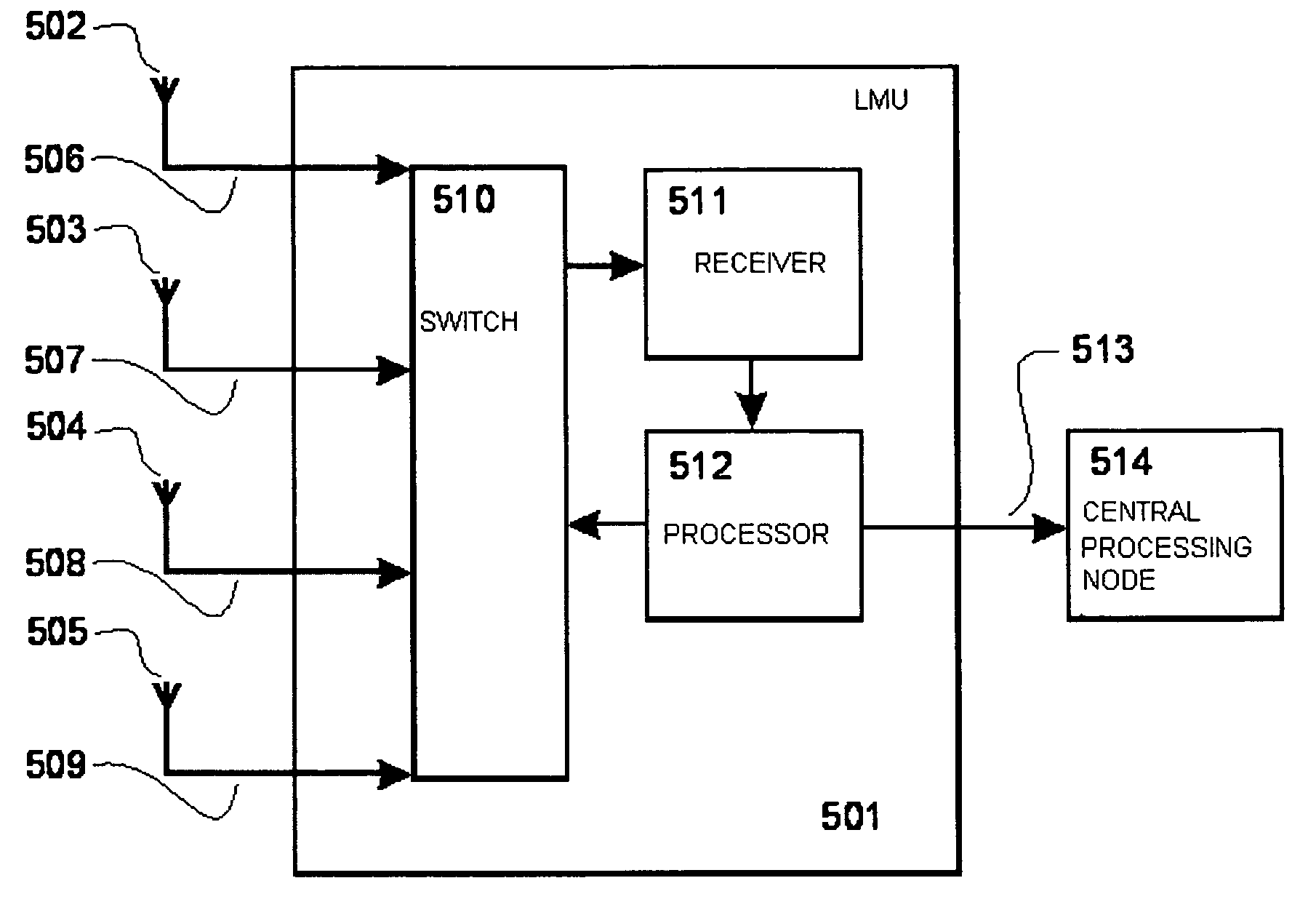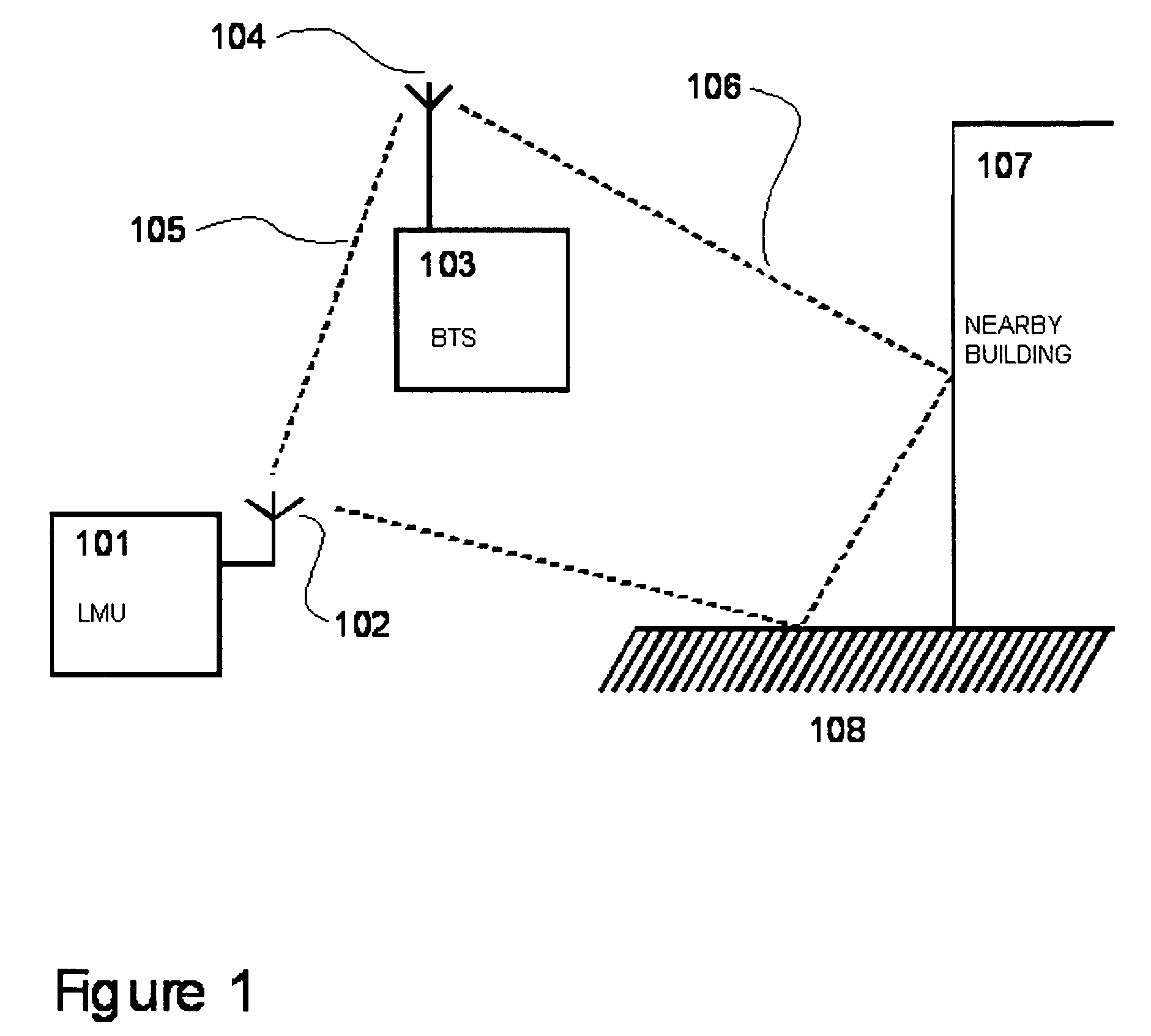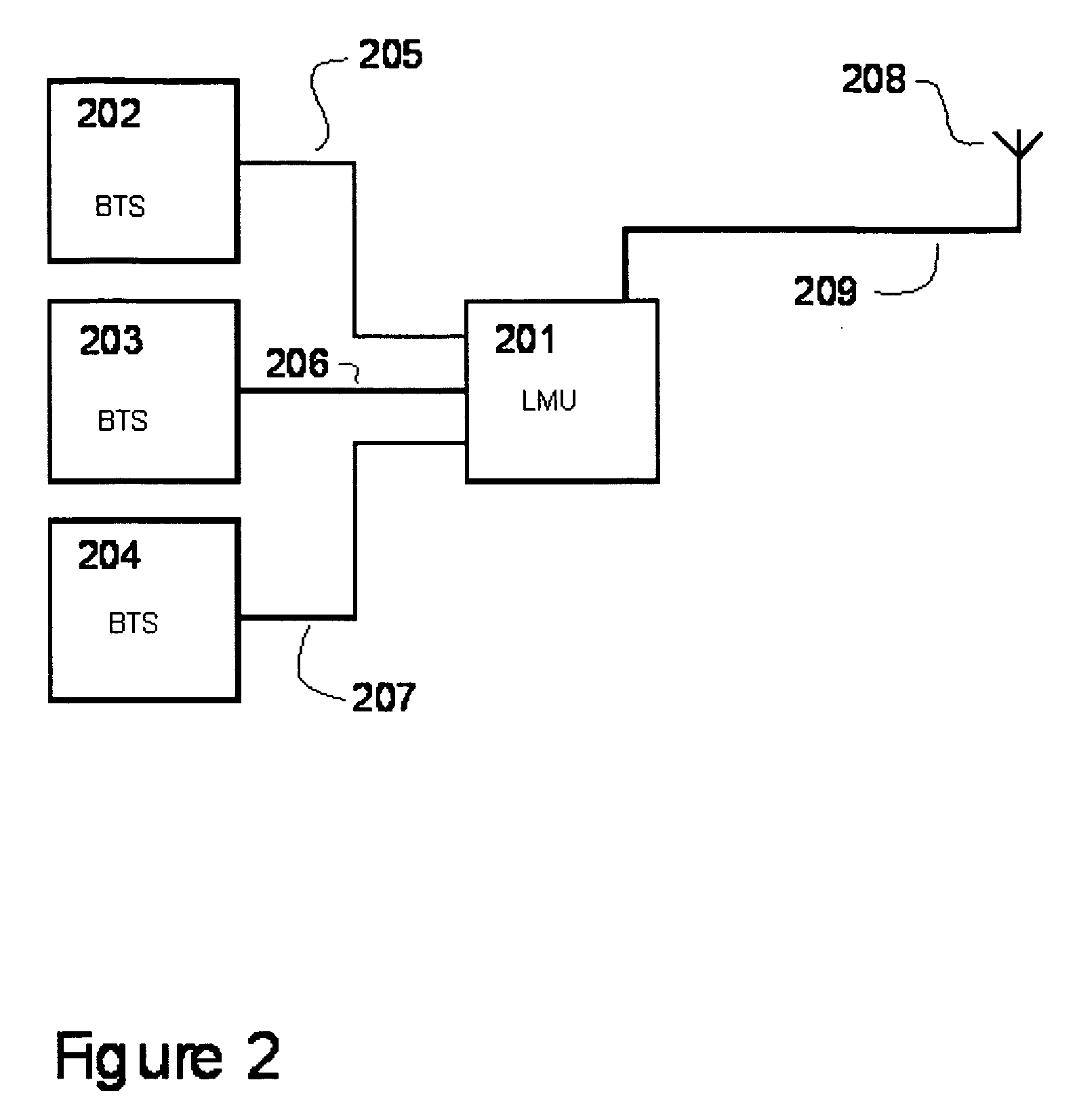Radio location system measurement unit
a technology of radio location and measurement unit, which is applied in the direction of navigation instruments, instruments, wireless commuication services, etc., can solve the problems of inability to accurately measure ‘local’ signals, inability to place lmu antennas, and large delay of received signals, so as to reduce or eliminate the interference caused by local scattering and reliable and accurate measurements
- Summary
- Abstract
- Description
- Claims
- Application Information
AI Technical Summary
Benefits of technology
Problems solved by technology
Method used
Image
Examples
Embodiment Construction
[0043]The problem associated with co-location of an LMU at a BTS site is caused by scattering and reflection from local objects such as buildings, trees, etc of the very bright signals radiated forward by the BTS antenna, as explained above. One such mechanism is illustrated in FIG. 1, which shows a BTS 103 connected to a transmitting antenna 104, and an LMU 101 connected to a receiving antenna 102. The transmitted signal 106 is reflected back to the LMU antenna 102 by the ‘corner reflector’ formed between a nearby building 107 and the ground 108. The reflected signal interferes with the signal 105 received directly from the back-lobe of the transmitting antenna 104 in a manner which is both unpredictable and variable. It would take just a half-wavelength change in the reflected signal path, for example, to transform from constructive to destructive interference at the LMU antenna, a few centimeters change in the path at GSM frequencies. The result is that the LMU reports a timing f...
PUM
 Login to View More
Login to View More Abstract
Description
Claims
Application Information
 Login to View More
Login to View More - R&D
- Intellectual Property
- Life Sciences
- Materials
- Tech Scout
- Unparalleled Data Quality
- Higher Quality Content
- 60% Fewer Hallucinations
Browse by: Latest US Patents, China's latest patents, Technical Efficacy Thesaurus, Application Domain, Technology Topic, Popular Technical Reports.
© 2025 PatSnap. All rights reserved.Legal|Privacy policy|Modern Slavery Act Transparency Statement|Sitemap|About US| Contact US: help@patsnap.com



